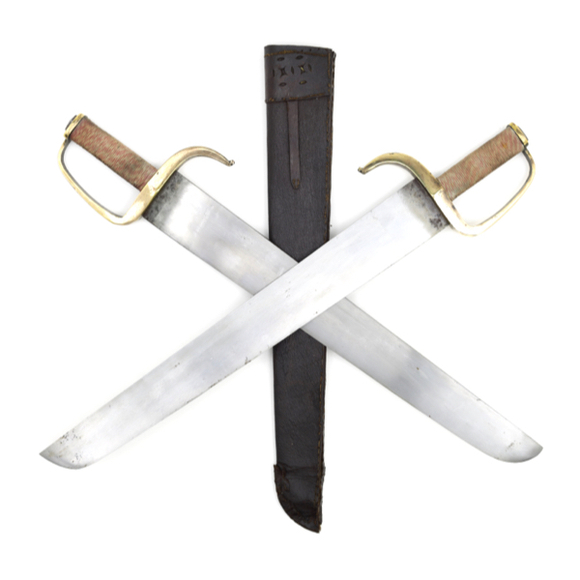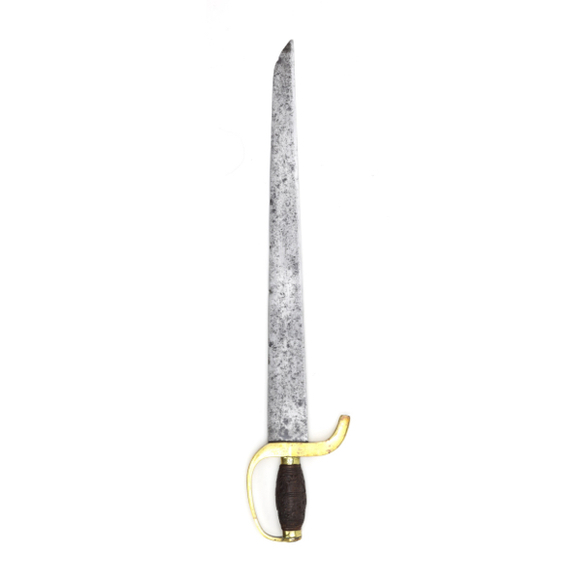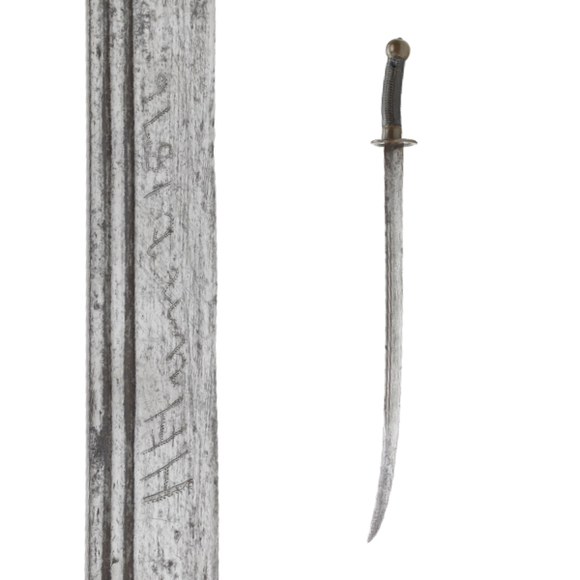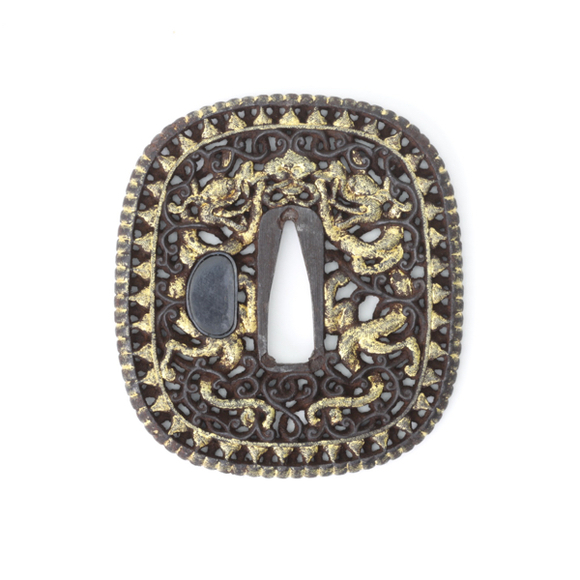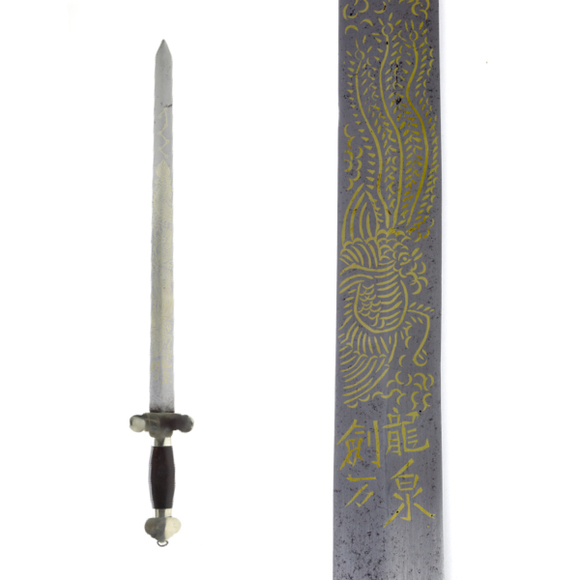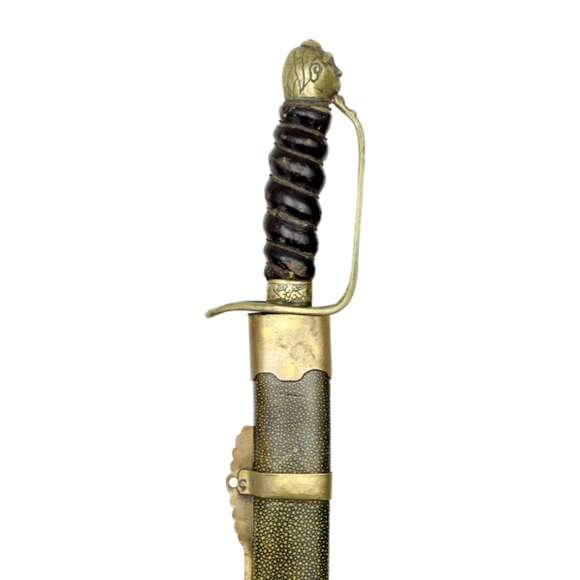Wide-bladed pair with eccentric hilt features. Complete with scabbard.

Right 59.9 cm
Left 59.6 cm
Right 47 cm
Left 47.1 cm
Right
Base 7.8 mm
Middle 5.2 mm
5 cm from tip 4.3 mm
Left
Base 8.5 mm
Middle 5.5
5 cm from tip 4 mm
Right
Base 53 mm
Middle 36.5 mm
5 cm from tip 25 mm
Left
Base 54 mm
Middle 39 mm
5 cm from tip 25 mm
Right 1021 grams
Left 1020 grams
Right 6.8 cm from hilt
Left 7 cm from hilt
Iron, steel, bronze, brass, hardwood
Southern China
Circa 1850-1875
Introduction
Húdiédāo (蝴蝶刀), are a type of double swords that seem to have originated in or around the port cities of southern China. The local Cantonese name is wu dip dou. They are also known in Cantonese as bat jam do (八斬刀) or "eight cutting knives", pronounced bāzhǎndāo in Mandarin.
Their defining feature is a large D-shaped guard with an upturned quillon at the back, usually of a copper alloy but sometimes made of iron. They typically have half-hilts that fit in a single scabbard side-by-side and can be drawn as if they were one weapon.
For more, see my glossary article: Húdiédāo (蝴蝶刀)
This set
An outstanding set. It has the classic wide variety of military blades, which are still quite a bit longer than the short stubby civilian pieces. Blades are nicely forge folded with a high-carbon edge plate backed by a series of layers of lower and medium-carbon steel.*
It is hilted with heavy bronze D-shaped guards, and hardwood grips held by two ferrules. The set shows great attention to detail with beautifully faceted ferrules, and tasteful lines and facets on the knuckle bows. The tangs are peened over a lozenge shaped washer, the lozenge being a symbol for victory in Chinese culture.
The hilts are beautifully carved with a panel of lozenges in the center, bordered by a decorative border featuring interlocking circles and lozenges and a far outer border of rolling thunder patterns, all deeply carved, with precision.

The excellence of this set is also apparent from what we don't see; with weights of 1021 and 1020 grams, they are weight matched to a single gram difference, which means a 0.1% tolerance. (0.0999% to be exact). The balance is also very well matched, with only 2 millimeters difference.
Both swords have a number 15 applied in white on the inside of their hilts, probably a later, European collection number.

Notes
* This is the same principle that makes bulletproof glass; neither plastic nor glass can stop a bullet, but a plastic-glass-plastic-glass-and so-on laminate can. Using many layers of steel with strongly differing carbon content, and thus hardness after quenching, was also a trait of the famous Japanese Sōshū school of which Masamune was a proponent.

















Southern Chinese officer style saber with later inscription H.Hunt 1876.

